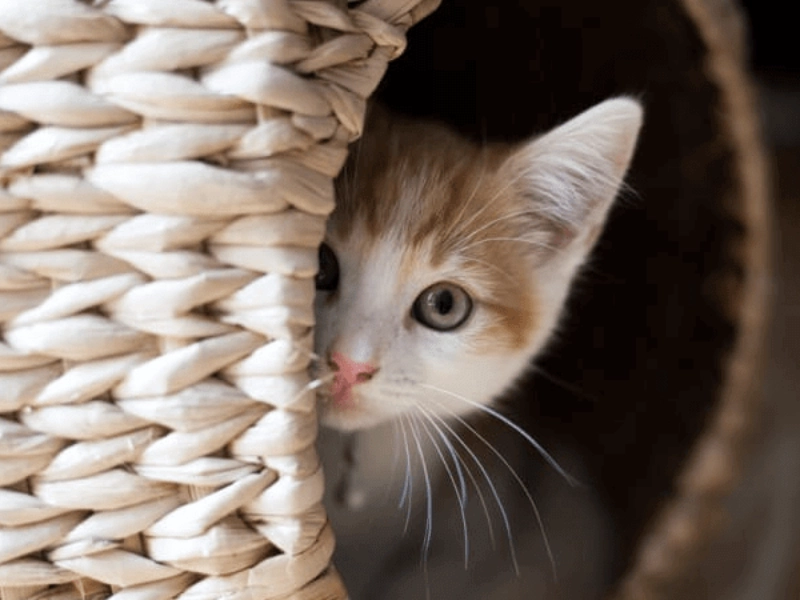4. Your Cat Is Isolating Themselves More Than Normal

Often seeking alone time and loving their own company, cats are known as independent animals. Cats are special pets in part because of their innate preference for sporadic solitude. However, it’s a behavior that should not be disregarded when a cat starts to withdraw from their human family members or other household pets more than usual. This growing isolation is a subtle but important clue that something may be wrong with the physical or emotional health of your kitty friend.
A cat could start distancing herself more than usual for many different reasons. One of the main causes is illness or physical discomfort. When they’re not feeling well, cats, compelled to hide symptoms of weakness, often withdraw to calm, isolated areas. This behavior is a legacy of their natural background; exhibiting vulnerability could attract predators. Dental problems, arthritis, digestive issues, or more serious conditions like kidney disease or cancer are common health issues that could cause further isolation. Any kind of pain can lead a cat to withdraw in order to deal with their misery.
Another major element causing a cat to withdraw is stress and anxiety. For cats, changes in the home environment—such as moving to a new house, adding a new pet or family member, or even rearranging furniture—can be quite disturbing. Under these pressures, they may withdraw and search for peaceful, safe areas where they feel more comfortable. Especially if a cat feels threatened or unable to reach vital resources like food, water, or litter boxes without encountering perceived competition, conflicts with other cats in the house can also lead to increasing isolation.
Additionally influencing a cat’s inclination to sequester herself more are age-related changes. Cats entering their elderly years may show cognitive loss similar to that of human dementia. Called feline cognitive dysfunction, this disorder can lead to disorientation, anxiety, and changes in social behavior—including more isolation. Older cats may also feel more vulnerable due to sensory changes in vision or hearing, which drives them to seek out peaceful, familiar environments where they feel comfortable.
When you observe your cat distancing herself more than usual, you should handle the matter gently and patiently. Resist the urge to force interaction or drag them from their hiding places, as this could increase their stress and potentially make things worse. Instead, pay close attention to their behavior and look for any other signs of illness or discomfort, such as changes in appetite, litter box behavior, or grooming habits.
Given the possible significance of the underlying causes, increased isolation warrants a visit to the veterinarian. A thorough physical examination might help rule out or identify any medical issues underlying your cat’s altered behavior. To gain a comprehensive view of your cat’s health, your veterinarian might recommend blood tests, urinalyses, or other diagnostic procedures. Should medical causes be eliminated, your veterinarian may suggest consulting a feline behaviorist to address any psychological or environmental factors contributing to the seclusion.
There are things you can do to help your cat feel more comfortable and safe in the interim. Make sure they have access to quiet, secure areas where they can retreat from overstimulation. Create elevated spaces with shelves or cat trees to provide cats with control over their environment and a sense of security. Maintain a consistent routine for feeding, playtime, and attention; consistency helps to reduce stress. Engage in gentle, non-threatening interactions so your cat can approach you on their terms. In some cases, pheromone diffusers or sprays designed to create a calming environment for cats might also be beneficial.
Remember that your cat’s increased isolation is their way of expressing that something isn’t right in their environment. By paying attention to this behavior change and seeking professional help when necessary, you can ensure your cat’s well-being and strengthen your bond with them, ultimately helping to identify and resolve potential environmental or health issues.

